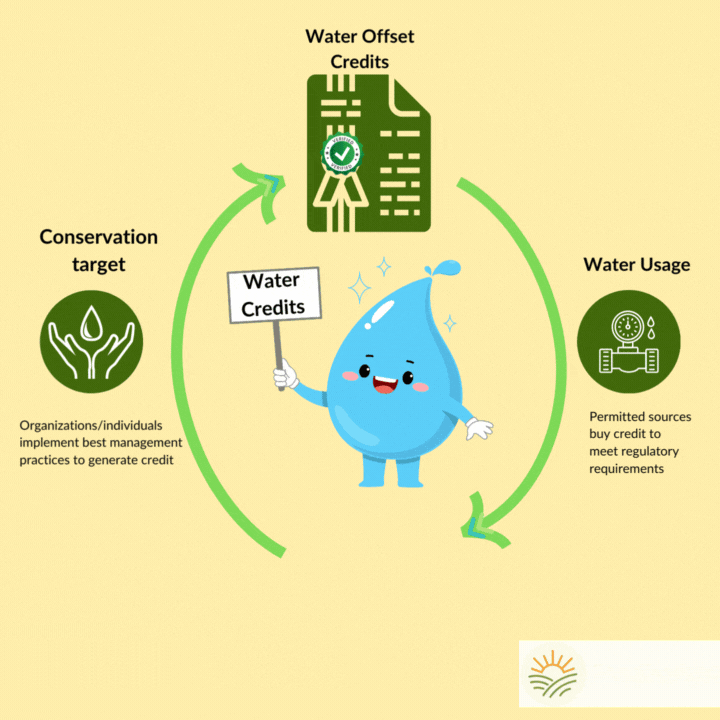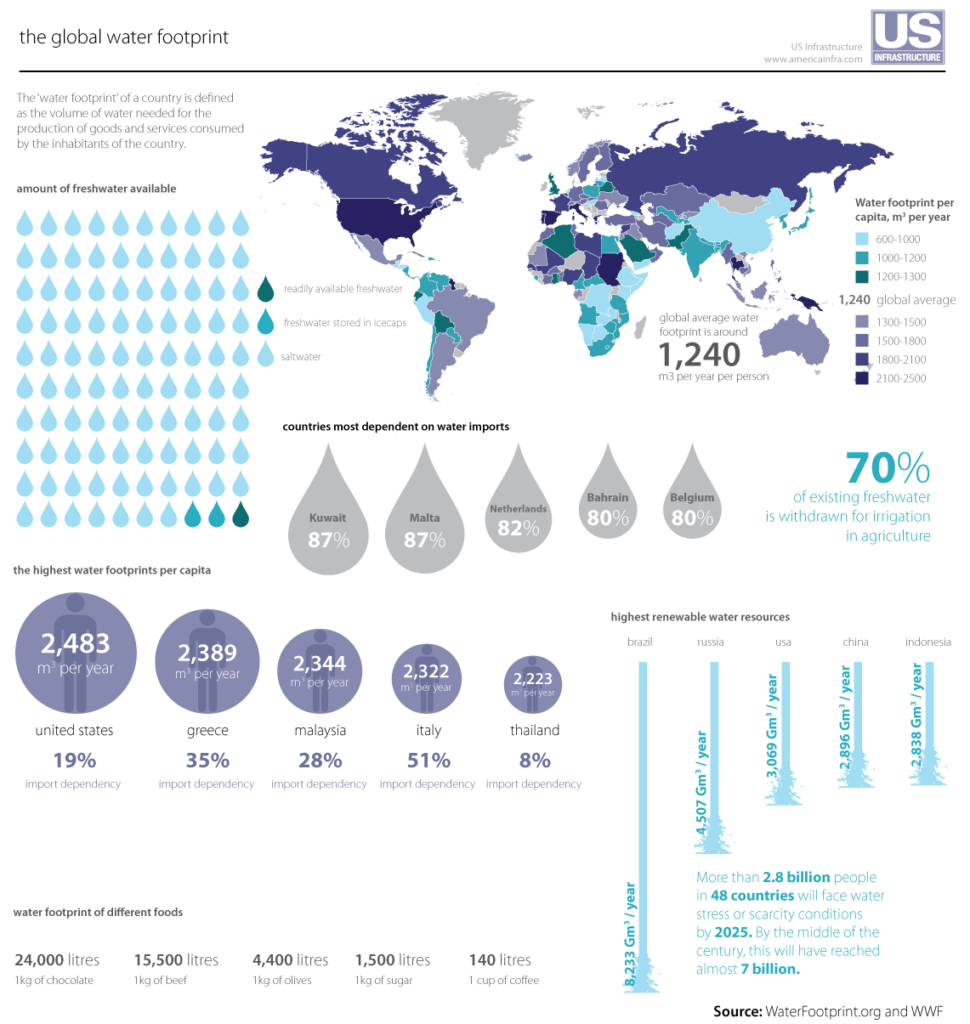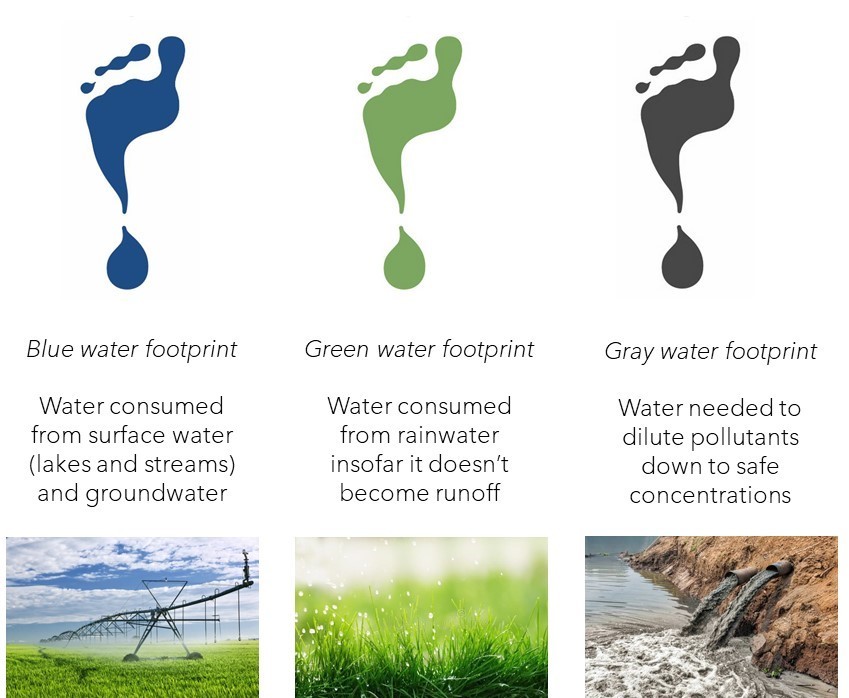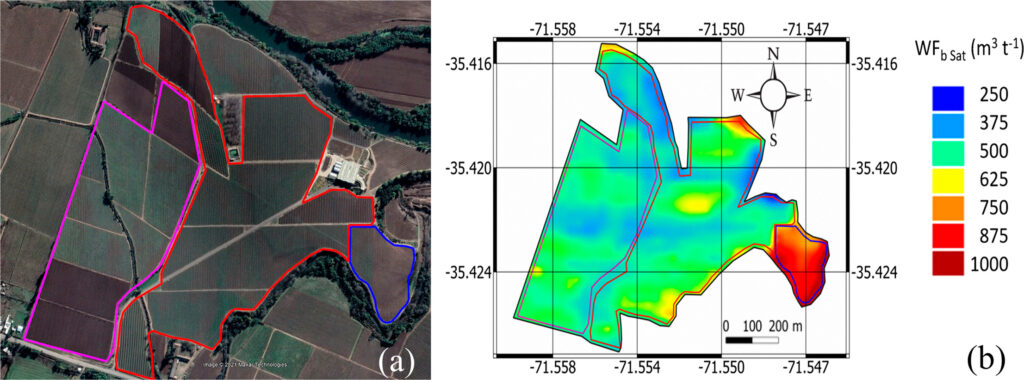Water, the lifeblood of our planet, is intricately woven into every aspect of our lives. It sustains ecosystems, powers industries, and nourishes communities. However, as our population burgeons and our climate shifts, the delicate balance of our water resources is increasingly under threat. In the face of this challenge, the emergence of concepts like water footprints and water credits is a beacon of hope, offering innovative solutions to navigate the complex web of global water sustainability.
Imagine this: every sip of water you take and every product you consume leaves an invisible mark on the world’s water resources. This mark, your water footprint, is more than just a concept. It reflects the water you directly use, the water embedded in the products you buy, and the services you enjoy. But here's the empowering part: a powerful solution exists alongside this concept—water credits. This means that your actions, no matter how small, can make a significant difference. You have the power to shape the future of our water resources. Your choices matter.
Just as you can balance your carbon emissions with carbon offsets, you can now balance your water footprint with water credits. Here's how it works: when you purchase water credits, you invest in water conservation and restoration projects. These projects aim to either reduce water consumption or enhance water efficiency, thereby offsetting the water you've used. This empowers you to mitigate your water usage and support sustainable water management practices around the globe. Your actions are not isolated but part of a global movement towards water sustainability, where every individual's contribution is a crucial part of the solution. It is a potent resource, enabling individuals and organizations to make significant strides toward water sustainability.
Together, these concepts form a dynamic duo, guiding us toward a future where water is valued, conserved, and shared equitably. Welcome to the fluid frontier of water footprints and water credits—where every choice we make shapes the destiny of our most precious resource and where your options can make a significant impact.
Together, these concepts form a dynamic duo, guiding us toward a future where water is valued, conserved, and shared equitably. As we embark on this journey, let’s embrace the challenge, seize the opportunity, and chart a course toward a world where every drop counts and every action makes a difference. Welcome to the fluid frontier of water footprints and water credits—where every choice we make shapes the destiny of our most precious resource and where your options can make a significant impact.
Understanding Water Footprint and Water Credits
What is a Water Footprint?
The water footprint concept originated in the early 2000s, developed by Arjen Hoekstra while working at the UNESCO-IHE Institute for Water Education. It serves as a metric to quantify the total volume of freshwater used by an individual, organization, or product.
The water footprint reveals the amount of water utilized to create the goods and services we rely on daily. It encompasses individuals, communities, and businesses, encapsulating the freshwater essential for consumption or production. This metric unveils humanity’s utilization of limited freshwater resources, aiding in evaluating the impact on freshwater systems and crafting mitigation strategies.
The water footprint is a detailed gauge of freshwater consumption, traversing each production phase and value chain. It quantifies water usage across diverse processes, from cultivating crops like rice to manufacturing products like jeans or fuelling vehicles. This concept aligns with broader environmental metrics like ecological and carbon footprints, offering distinct insights into resource utilization. Embracing direct and indirect water usage provides a comprehensive view of water dependency, highlighting the significant role of supply chain water usage.
What are Water Credits?
Water credits are a novel approach to promote water conservation and sustainable water management practices. Like carbon credits, which aim to reduce carbon emissions, water credits provide a mechanism for quantifying and trading reductions in water consumption or improvements in water efficiency. They represent a quantifiable amount of conserved or newly created water that can be traded between organizations facing water deficits and those with surpluses.
This model mirrors the U.S. Environmental Protection Agency's Water Quality Trading Policy, which enables the exchange of pollutants like phosphorus and nitrogen. Meanwhile, the United Nations GEMS/Water Programme's Green Water Credits (GWC) initiative incentivizes upstream farmers to adopt water-saving practices, although they face initial capital challenges.
Water credits are closely related to the water footprint, as both address the overarching goal of sustainable water management. While the water footprint measures the direct and indirect water use associated with producing goods and services, water credits offer a practical approach to mitigate this usage by encouraging reductions in water consumption or enhancing water efficiency practices.
Water Footprints in the FMCG Industry
The Fast-Moving Consumer Goods (FMCG) industry encompasses various products, including food, beverages, personal care items, and household goods. Each product has a unique water footprint determined by ingredient sourcing, manufacturing processes, and packaging materials. For instance, agricultural products like coffee or chocolate often have high water footprints due to the water-intensive nature of farming practices. Similarly, producing beverages like beer or soft drinks also requires significant water inputs.
Additionally, the packaging used for FMCG products contributes significantly to their water footprint. Plastic packaging, in particular, requires substantial amounts of water for production and has adverse environmental impacts throughout its lifecycle. Plastic production contributes to water pollution and depletion. This underscores the need for sustainable packaging solutions that minimize water usage and environmental impact.
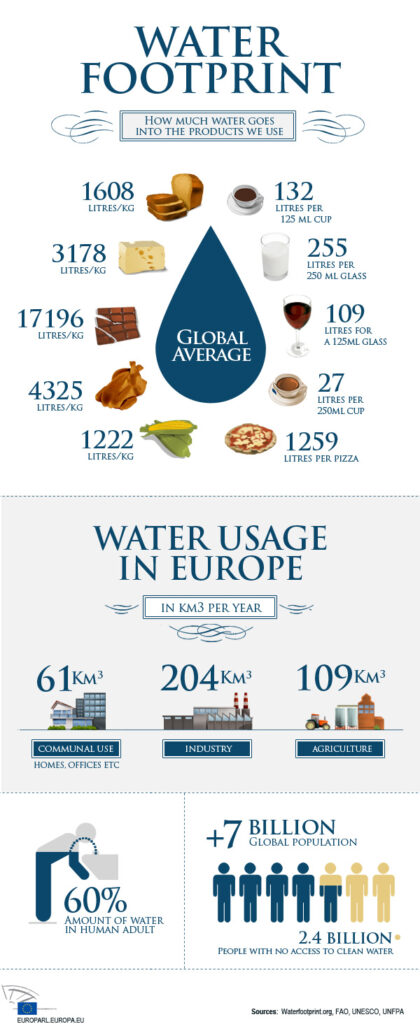
According to research conducted by the EU, the food sector’s water footprint stands out significantly. On average, an EU citizen’s daily food consumption alone accounts for 2,521 liters per person. This figure underscores the considerable water resources required for regional food production.
This insight emphasizes the substantial impact of food consumption on water usage, highlighting the importance of water-conscious practices in agricultural and food production processes. It serves as a valuable reminder of the intricate relationship between food production and water resources, urging greater attention to sustainable water management within the agricultural sector.
Case Studies: Implementing Water Footprints and Water Credits
In corporate sustainability, many businesses actively engage in pioneering efforts to address water management challenges. These forward-thinking companies strategically integrate innovative solutions such as water footprints and water credits into their operations.
By implementing water footprints, organizations gain insights into their water usage across various processes, enabling them to identify opportunities for optimization and conservation. Meanwhile, adopting water credits allows companies to offset their water consumption by investing in water-saving projects or supporting water replenishment initiatives elsewhere. These proactive measures enhance water efficiency within their operations and contribute to broader efforts in promoting sustainable water stewardship globally.
Here are several leading FMCG companies that have embraced water footprint and water credit initiatives as part of their sustainability strategies:
- Bisleri proposes a water credit system for the beverage industry, partnering with the TERI School of Advanced Studies. The initiative aims to set a benchmark for water conservation and make beverage makers more accountable.
- Swayam Shikshan Prayog, in partnership with HUL, empowers women in Osmanabad with the Women-led Climate Resilient Farming Model. This initiative fosters sustainable agriculture, reduces water footprints, and promotes agro-biodiversity. It creates income avenues and lasting water preservation infrastructure, ensuring a sustainable future for generations.
- Cargill is pioneering water stewardship with its top-ranked program, focusing on essential ingredients like cocoa and soy. Their holistic approach integrates water strategies with sustainable food systems, creating enabling conditions for large-scale change and emphasizing regenerative agriculture to improve water resilience.
- Procter & Gamble (P&G) launched products to help consumers reduce their water footprints at home. Cascade Platinum, Dawn Powerwash Dish Spray, and Pantene/Rejoice No Rinse Conditioners offer innovative solutions to conserve water while maintaining performance. These initiatives align with P&G’s commitment to building a water-positive future for generations.
- Nestlé prioritizes efficient water management in agriculture, particularly in water-stressed regions. Agriculture consumes 70% of the world’s water, significantly affecting local water resources. Nestlé mandates compliance with its Responsible Sourcing Standard, conducts water risk assessments, and uses Water Footprint Network methodology to estimate water footprints, aiming to protect water resources and advance regenerative food systems.
Overall, the growing awareness of water scarcity and environmental sustainability among consumers, regulators, and investors is likely to drive industry giants to prioritize water management initiatives in the years to come. By proactively addressing water footprints and credits, these companies can mitigate risks associated with water scarcity and demonstrate their commitment to environmental goals and long-term business resilience.
Future Directions
- Advancements in Water Footprint Assessment
Continued technological advancements, data analytics, and remote sensing promise to enhance the accuracy and granularity of water footprint assessments. New technologies like satellite imagery, Internet of Things (IoT), sensors, and blockchain-enabled supply chain tracking systems can provide real-time insights into water usage, enabling companies to identify inefficiencies and optimize resource allocation effectively.
- Integration of Water Sustainability into Corporate Strategies
As water scarcity escalates and stakeholder expectations evolve, embedding water sustainability considerations into your corporate strategies will become increasingly imperative. Companies will likely integrate water-related metrics, targets, and disclosures into their sustainability reporting frameworks, aligning water stewardship efforts with broader environmental, social, and governance (ESG) goals.
- Collaborative Initiatives and Partnerships
Collaboration and partnerships will be crucial in addressing water-related challenges within the FMCG sector. Cross-sectoral collaborations involving governments, non-governmental organizations (NGOs), academia, and industry stakeholders can facilitate knowledge sharing, resource mobilization, and collective action to drive systemic change.
- Innovative Financing Mechanisms
Exploring innovative financing mechanisms, such as impact investing, green bonds, and public-private partnerships, can unlock new water conservation and restoration funding sources. By leveraging market-based instruments and aligning financial incentives with sustainable outcomes, companies can overcome economic barriers and accelerate the adoption of water credits and other water stewardship initiatives.
Conclusion
The intertwined concepts of water footprints and water credits offer actionable pathways to sustainable water stewardship, which is crucial for businesses navigating a growing population and shifting climate. Water footprints help quantify direct and indirect freshwater use, enabling informed decisions about conservation. Water credits provide a practical solution to balance water usage by investing in global water-saving projects.
Forward-thinking companies are already integrating these concepts, demonstrating their commitment to environmental stewardship and sustainable water management. Technological advancements, such as real-time monitoring tools, further enhance water usage optimization. Embedding water sustainability into corporate strategies is now optional but essential, aligning with broader ESG goals.
As your business moves towards a water-positive future, partnering with experts like Evalueserve IP and R&D can ensure you navigate these complex challenges effectively. Every action counts—let’s ensure they lead to meaningful water stewardship.
Talk to One of Our Experts
Get in touch today to find out about how Evalueserve can help you improve your processes, making you better, faster and more efficient.
